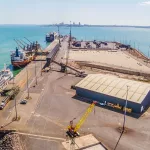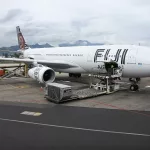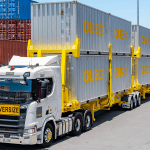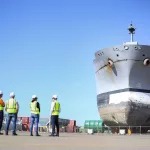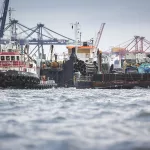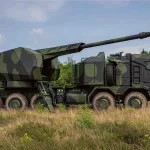INTRODUCTION
The Belt & Road Initiative (BRI) continues to feature in international headlines. However, many corporates are only now appreciating the full quantum of potential impact on their physical and financial supply chains. In the last six years since the initiation of BRI, rising protectionism in the West has manifested itself along different dimensions including the US-China trade dispute, Brexit and varying levels of BRI endorsement among EU states. While this creates challenges along certain trade corridors, it also creates opportunities for those that are well prepared and agile.
ABUNDANT OPPORTUNITY
The overall trajectory of China’s economic progress in the last few decades is without question. Now the second largest economy in the world and the largest in terms of PPP, China’s GDP per capita has also increased more than 30-fold since 1978. Given the continued ambition of China and the BRI, the opportunities for corporates and financial institutions are apparent – China’s huge plans for investment and infrastructure projects will need to be matched with financing, physical movement of goods and an ongoing economic inter-dependence between countries. The BRI clearly appeals to Chinese corporations as new markets open and the country moves away from low-cost manufacturing towards higher value goods and services. In contrast to Chinese trade volumes with the US falling in recent years, in 2017, China’s external trade with BRI countries reached $1.1 trillion, supporting 14.2 percent year on year growth in China’s foreign trade. The EU, for example, is now China’s largest trading partner, and China is the EU’s second largest.
The BRI is maturing, and so too are the associated opportunities, trust, expectations and rewards. Furthermore, China realises that it cannot fund the initiative alone. To date, funding for BRI-related projects has been largely reliant on Chinese banks but there is also a growing role for international banks, particularly institutions offering a complete suite of financing options across their international networks.
We expect the theme of private funding for BRI projects to increase significantly in the coming years, particularly as China’s central government looks to moderate its BRI spend. Opportunities for financial institutions and corporates in other regions should emerge.
SUPPLY CHAIN SUPPORT
New trade and investment links between China and a range of other countries along key BRI corridors continue to develop. As such, financial risks for companies are also increasing as BRI-related exports and investments grow to certain sub-investment grade countries in ASEAN, South Asia, the Middle East, Africa and beyond. Trade finance is a key area of focus for many companies and multinational corporations in China to facilitate and finance trade, but also to mitigate the various credit, non-payment and performance risks involved.
Physical supply chains have also become increasingly complex and interdependent – to counter increasing wage levels in China, hedge against protectionism risk and seek locations with more favourable demographics for labour-intensive manufacturing. Simplistic approaches such as ‘Made in China’ and ‘China + 1’ sourcing strategies are no longer enough. As such, not all trade corridors will benefit in the same way, with some segments in certain key corridors expected to benefit more than others – for example energy, transportation infrastructure, power generation and real estate.
Beyond risk mitigation, trade also provides an efficient tool for financing to optimise a corporate’s overall working capital, unlocking value by shortening cash conversion cycles. While documentary trade remains prevalent in dealings with relatively challenging markets and as an instrument to short tenor financing, there is also an evolution towards open account trade. In financing receivables from buyers and payables to suppliers, trade finance is becoming increasingly integrated into complex cross-border financial supply chains.
This is an area where established foreign banks can really add value to businesses in China by offering access to an international network for cross-border solutions.
THE ROLE OF PROTECTIONISM
As politics continues to change globally, with the potential for trade wars between the US and China and the spectre of protectionism, having a BRI strategy is becoming imperative – not just for those in China but also for businesses across Europe and Asia. While it is difficult to predict exactly where the next wave of protectionism will come from, corporates must still take steps to sufficiently prepare their supply chains.
Furthermore, China has evolved from a low-cost manufacturing exporter towards a higher value-add exporter of infrastructure, technology and engineering solutions. Hence the nature of the protectionist response also tends to rise, given that many of these industries are considered to be important to national security. Maritime transportation, port access and communication network equipment are good examples. On the other hand, it appears that the protectionist response in other industries appears less pronounced, given that low-cost manufacturing also provides benefits to global consumers.
These political uncertainties have come just as global commerce faces existing challenges such as slowing growth in global trade volumes in recent years. For Commerzbank, however, among all this change and turbulence one constant remains – the need to be a proactive, committed and reliable partner for those engaged in international trade.
UNDERSTANDING THE IMPACT
My message to corporates is clear: you should have a clear and robust BRI strategy. Understand what it means for your industry and your company, both in terms of opportunity and risks. Commerzbank is helping its clients do just that, focusing on a range of business opportunities across all the BRI related trade corridors.
BRI, whilst expansive and ambitious, isn’t without challenges and should not be underestimated. As the BRI continues to be an area of focus, understanding its impact on the specific sector in which you are focused on and active in is key. China is ambitious in its emergence as a global trade superpower, but this creates as many opportunities as it does potential pitfalls.





